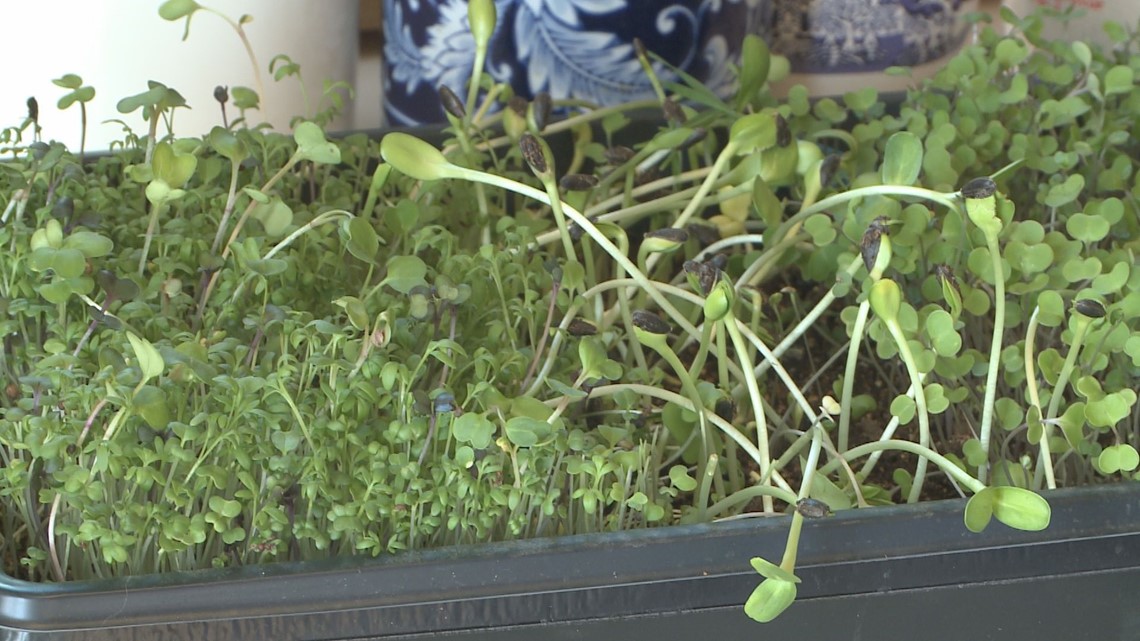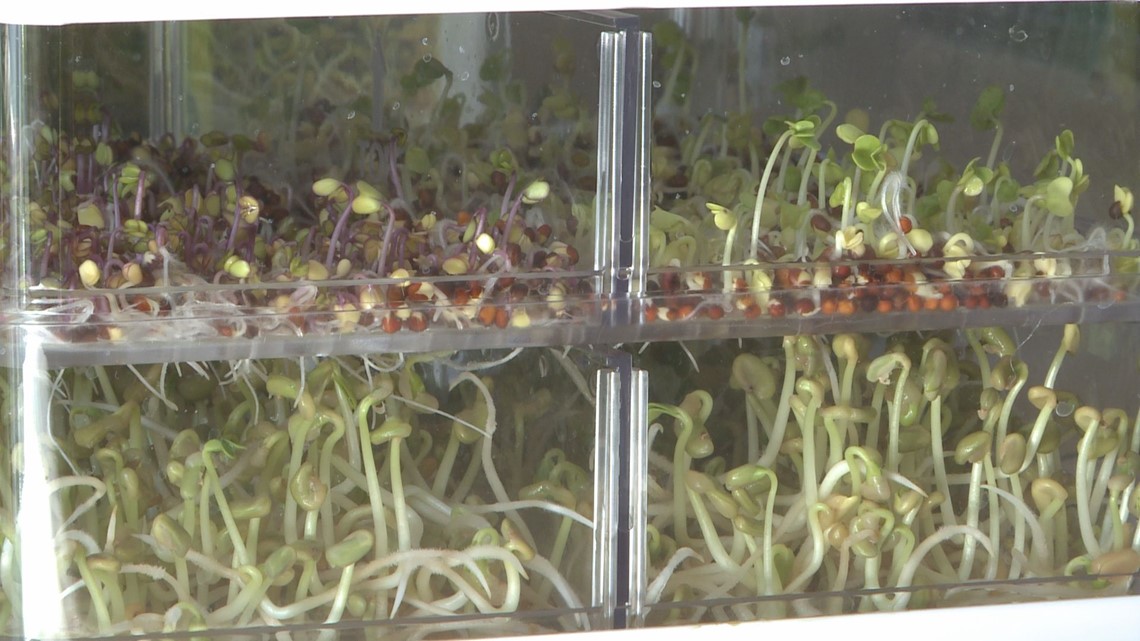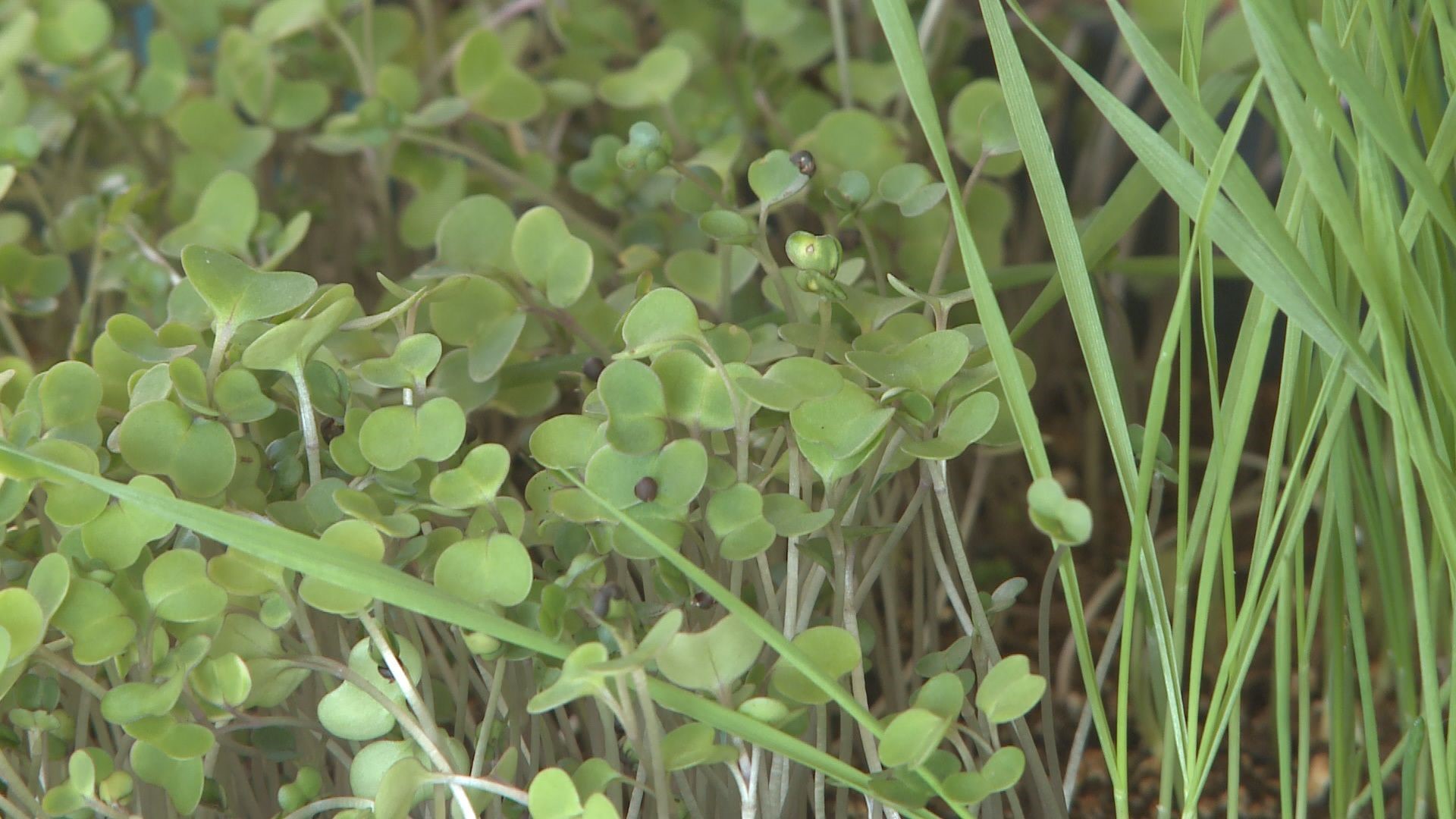DENVER — You don’t have to wait for warmer weather to start growing some fresh food. Microgreens and sprouts can be grown indoors, don’t require a lot of room, and are easy to grow.
Sometimes the words “microgreen” and “sprout” are used interchangeably, but they aren’t the same. Microgreens are grown in soil, and are the new, tender shoot of a vegetable plant. They are cut off at soil level, so you won’t be eating the roots. Sprouts are grown without soil. They are soaked and rinsed in water to germinate, and are eaten in their entirety - tiny roots, leaves, seeds, and all.


Here is what you need to grow microgreens:
- Microgreen Seeds: You can use almost any vegetable seed to grow microgreens or a special microgreen seed mix. If you want to make your own mix cilantro, kale, Asian greens, collards, radishes, basil, and beets are all great seeds to start with.
- Soil: Seed starting medium soil is the best, but any light soil is fine.
- Tray: You can use a regular seed-starting tray (one solid tray, one tray with holes, and a plastic lid), or any shallow tray. The greens will only be grown for about 10-14 days.
- Light Source: A sunny window with indirect light or a warm, bright room. Microgreens grow well under a fluorescent light or “grow” light too.
- Water: Use a spray bottle for microgreens. Watering directly from the faucet will wash the little seeds too deep into the soil.
Microgreen planting, watering, harvest and storage:
- Fill the container with soil to ½ inch from the top. Moisten the soil a little before planting seeds.
- Sprinkle your seeds liberally. Microgreens are broadcast densely. Cover loosely with a light layer of additional soil.
- Spray the soil liberally with a spray bottle and cover with a plastic lid or plastic wrap. Keep the soil moist but not soggy.
- Seeds will germinate in a few days. Be patient. Harvest when the microgreens are about 2 inches tall. To harvest, cut them off at the soil surface with scissors. You’ll only get one harvest out of each tray. You can replant the seeds in the same tray three to four times.


Here is what you need to grow sprouts:
- Sprouting Seeds: Please note, don’t sprout tomato or potato seeds as they are generally poisonous to humans.
- Sprouting Tray or Mason Jar: If you use a mason jar, you’ll need a lid with small holes for drainage.
- Soak: Soak sprouting seeds overnight.
- Drain: Drain the water and spread the seeds evenly in the tray or place them in the mason jar.
- Light Source: A sunny window (not direct sun), or a bright room.
- Rinse and Drain: This step is important. The sprouting process happens through water, air and light. Rinse your seeds twice a day (once in the morning, once at night) with clean, cool water and drain well. This also ensures no bacteria develops.
Both microgreens and sprouts can be stored in the refrigerator. Rinse before use and if they don’t smell fresh, don’t use them Send them to the compost pile.
They are nutritious, flavorful, and easy to grow. Perfect to use in salads, sandwiches, stir-fries or my favorite, avocado toast!
More Proctor's Garden:
> Top stories curated daily just for you! Sign up for the 9NEWSLETTER to get can’t-miss stories, Next and Broncos content, weather and more delivered right to your inbox.
SUGGESTED VIDEO: Proctor's Garden
MORE WAYS TO GET 9NEWS
Subscribe to our daily 9NEWSLETTER
Download the 9NEWS APP
iTunes: http://on9news.tv/itunes
Google Play: http://on9news.tv/1lWnC5n
HOW TO ADD THE 9NEWS APP TO YOUR STREAMING DEVICE
ROKU: add the channel from the ROKU store or by searching for KUSA.
For both Apple TV and Fire TV, search for "9news" to find the free app to add to your account. Another option for Fire TV is to have the app delivered directly to your Fire TV through Amazon.

